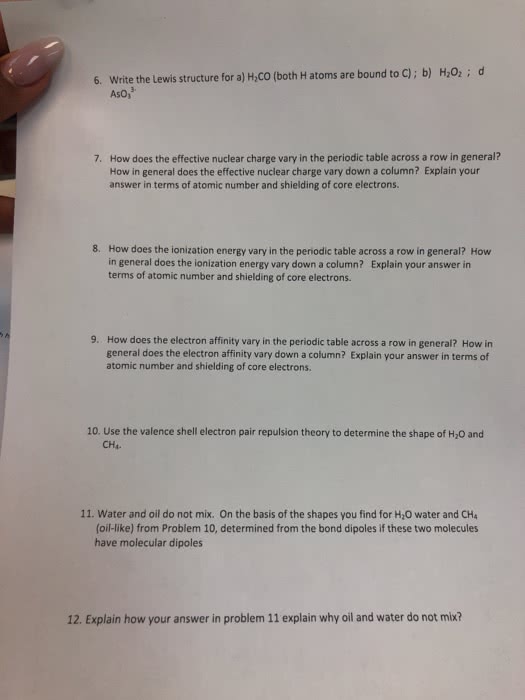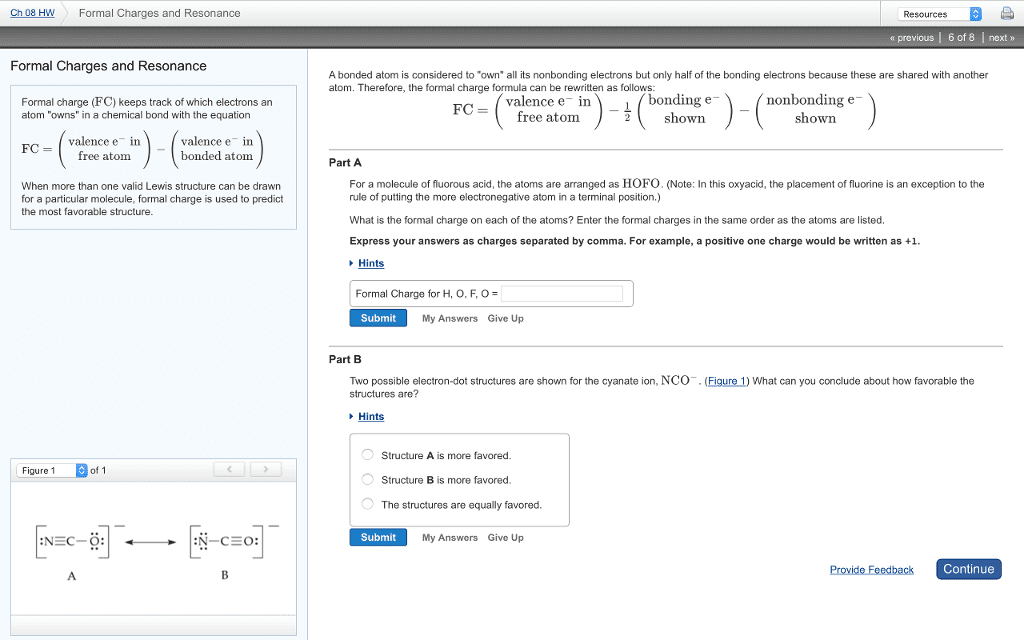CHEM 101DL Lecture Notes - Octet Rule, Vsepr Theory, Ic3

Chemistry 101DL
Dr. T. Woerner
Summer I, 2018
Bonding: General Concepts
Discussion/Explanation
1) Explain the trends effective nuclear charge across a row and down a column of the
periodic table. Compare these trends with those of ionization energy and atomic radii.
Do the same for the electronegativity trends across a row and down a column. What do
you conclude?
2) The bond energy for the C–H bond is about 413 kJ/mol in CH4, but 380 kJ/mol in
CHBr3. Although these values are relatively close in magnitude, they are different.
Explain why they are different. Does the fact that the C–H bond energy in CHBr3 is
lower make sense? Why?
3) The following ions are best described with resonance structures. Draw resonanace
structures, and using formal charge arguments, predict the “best” Lewis structure for each
ion.
a) NCO–
b) CNO–
Chemical Bonds and Electronegativity
4) Predict the order of increasing electronegativity in each of the following groups of
elements.
a) C, N, O d) Tl, S, Ge
b) S, Se, Cl e) Na, K, Rb
c) Si, Ge, Sn f) B, O, Ga
5) Rank the following bonds in order of increasing ionic character:
N–O; Ca–O; C–F; Br–Br; K–F
6) When an element forms an anion, what happens to the radius? Why? When an
element forms a cation, what happens to the radius? Why? Define the term
isoelectronic. When comparing the size of ions, which ion has the largest radius and
which ion has the smallest radius in an isoelectronic series? Why?
find more resources at oneclass.com
find more resources at oneclass.com
Document Summary
Discussion/explanation: explain the trends effective nuclear charge across a row and down a column of the periodic table. Compare these trends with those of ionization energy and atomic radii. Do the same for the electronegativity trends across a row and down a column. What do you conclude: the bond energy for the c h bond is about 413 kj/mol in ch4, but 380 kj/mol in. Although these values are relatively close in magnitude, they are different. Why: the following ions are best described with resonance structures. Draw resonanace structures, and using formal charge arguments, predict the best lewis structure for each ion: nco , cno , tl, s, ge, na, k, rb, b, o, ga. Chemical bonds and electronegativity: predict the order of increasing electronegativity in each of the following groups of elements, c, n, o, s, se, cl, si, ge, sn, rank the following bonds in order of increasing ionic character:



